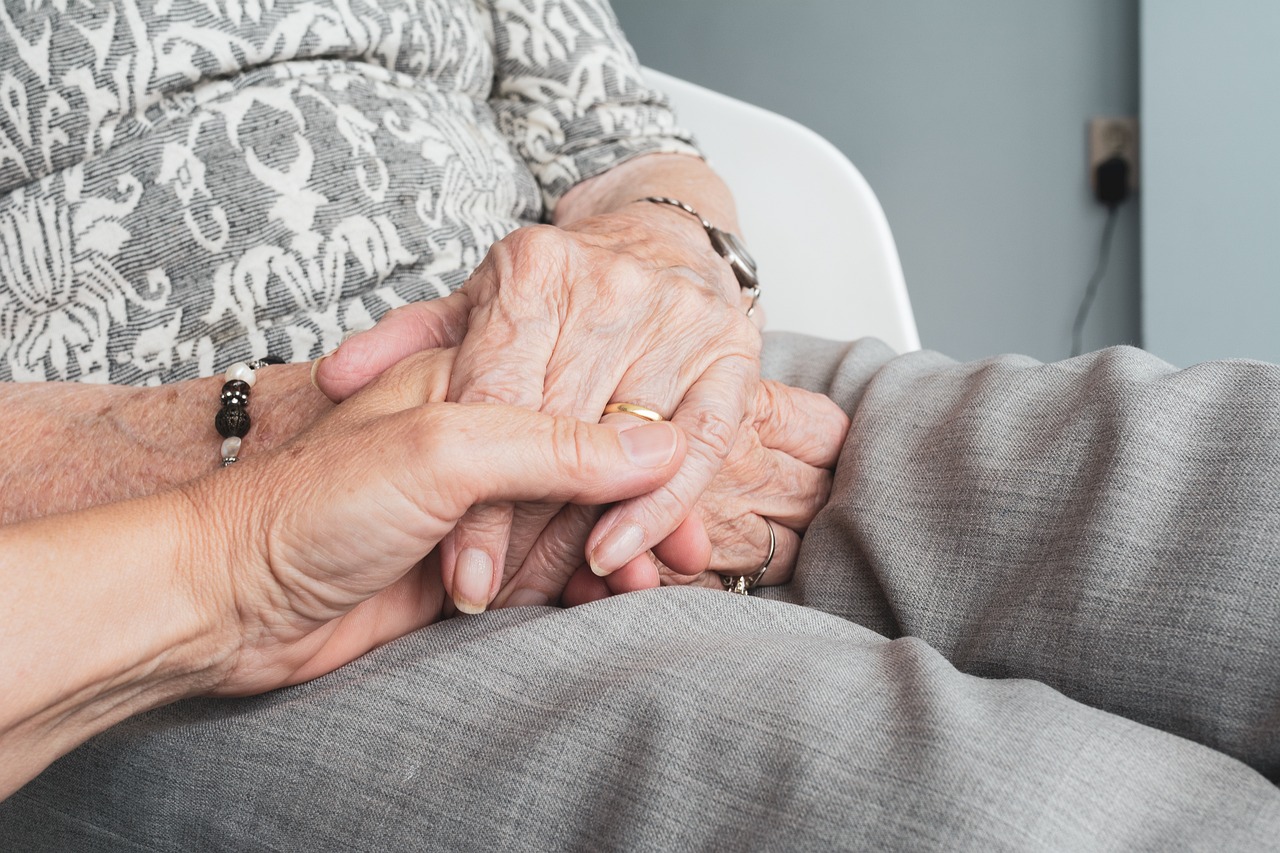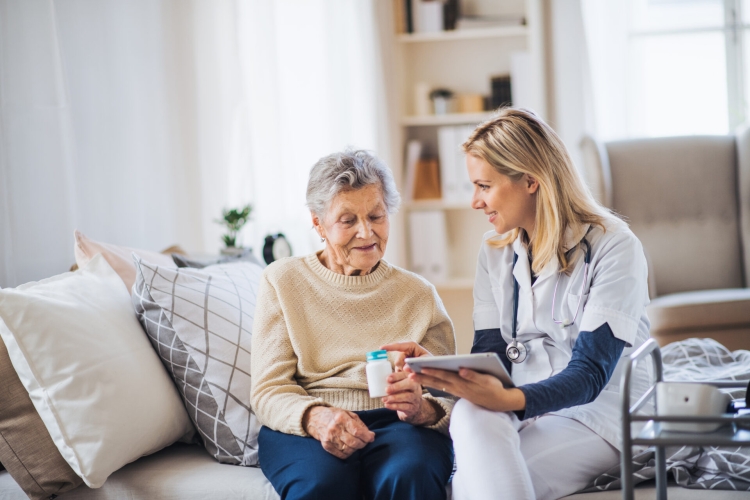The experience of Finland shows that a country with just over 5 million inhabitants will need as many as 30,000 carers to look after the elderly by 2030. However, this field isn’t exactly popular among young people and the jobs are not snapped up at first opportunity. “We already see that there’s a shortage of staff in the field and that there are many vacancies in schools for nursing training,” says Heidi Anttila, Senior Research Fellow at the Finnish Institute for Health and Welfare. So a search for solutions has started.
Estonia is facing the same problem. According to Regina Sergejeva, Head of the Department of Social Welfare of the Estonian Ministry of Social Affairs, the social sector needs approximately 3,000 new jobs by 2030. “The shortage of care workers is the biggest,” she says. The biggest problem is that people leave to go to the trade and services sectors, where monthly wages are more competitive. This means the need for a digital tiger’s leap in social care is massive.
Smart ageing helps maintain quality of life
Finland has developed the KATI Programme, which translates as “Smart Ageing and Welfare at Home”.
For example, the programme includes various remote guidance options, robots that improve the efficiency of taking medicines, and various health measurements that are automatically fed into the health information system. There are also devices that are wearable and can be installed in homes and they help monitor an elderly person’s movements so that a helping hand can be lent if needed, and solutions meant for rehabilitation.
According to Anttila, the objective of the KATI Programme is to introduce digital solutions to help the elderly manage independently at home for as long as possible. The programme brings together all the parties involved – healthcare professionals, people in need and their families.
The introduction of digital solutions will help create a more patient-centred and tailor-made approach, where the care plan is even more personalised to the needs of the elderly person and brings together the public, private and third sectors, focusing on the elderly person in need.
People don’t want to pay extra for digital solutions
According to Sergejeva, different digital technologies that support living at home have been tested in Estonia as well. “The feedback so far has been predominantly positive, but the fact that people are not yet ready to pay for a digital solution that makes it easier for his or her loved to cope at home has often become a stumbling block,” says Sergejeva about the experience so far.
'The technologies that work include an alarm button, and sensors and positioning devices can also be installed to ensure security, as they make it possible to identify the elderly person’s location if necessary. The Finnish KATI Programme uses similar solutions.
Known for its digital development, Estonia has also innovated in social welfare. For example, in January 2022, Tallinn University of Applied Sciences opened Estonia’s first social work and welfare technologies lab in Mõdriku, Lääne-Viru County, which tries to help both older and younger people. “The lab is designed for social work students as well as for training social workers who are already practicing,” Sergejeva notes.
Several technological options brought together in the lab have been developed in Estonia. For example, Pepper, a robot designed to promote social interaction, is already being used in nursing homes in the UK and Japan, as well as in waiting rooms in children’s hospitals, where its job is to entertain and reduce fears. “The lab also has a massage chair, light therapy and vibro-acoustic equipment, as well as a sleep robot to support the physical and mental health of the elderly,” Sergejeva lists the steps taken by Estonians to support social care.
Video call gives the elderly a sense of security
The KATI Programme also includes solutions that are already very common in other areas, such as video calls with the elderly as part of the remote care solution. Merle Kuusk, Welfare Adviser at the Nordic Council of Ministers' Estonian office, says that during a video call, various instructions can be given on how to take medication (from a medical dosage device), how to measure blood glucose and inject insulin, nutrition and eating. “Relatives can also be connected to a video call,” says Kuusk. “There are also group meetings in the morning and afternoon that offer social interaction, quizzes, games, music and rehabilitation.”
The Finnish seniors who took part in the pilot project also praised the charm of this solution in their feedback. Various sensors were also used to let people know immediately if an elderly person alone at home had fallen or needed help.
“Some said it was the highlight of their day when they were video-called,” said the staff who took part in the project. Similarly, these calls made the elderly feel cared for and that their concerns were genuinely listened to.
Sergejeva also believes that the future is certainly very much geared towards remote guidance. “There are already a number of different options – for example, MinuDoc is a good option for health advice,” she explains. Chat windows for providing user support for different services and products, where people can ask for advice and help when necessary, are increasingly popular.
The technical solutions that have been tested in Estonia include the PAIK Project, a community-based health support service to ensure continuity of care and the best social support in Viljandi County. The goal of the project is to bring together different healthcare and social parties: GPs, family nurses, specialists, local government’s social workers and pharmacists, community and family.
GPs, family nurses and local government’s social workers are important members of the client’s network, who participate in network meetings in a format agreed with the health manager and according to the needs of the situation, and they can take place either by telephone, teleconference or as face-to-face network meetings.

Photo: Sabine van Erp, Pixabay
Robot dispenses medicines at home
A technological helper tested in the pilot project was a drug-dispensing robot, which dispenses the right amount of medication, which the elderly person needs to take, at the right time every day. “The dispenser uses voice control and lighting to dispense medication into the client’s medicine bowl, which the care worker has nicely put in place during the home visit,” Anttila explains how the robot works.
The robot can also be remotely controlled, making it possible to give the elderly the medication they don’t need to take for long periods. “If an elderly person fails to take their medication or the medication is about to run out, an alarm is triggered that reaches the person controlling the robot,” explains Anttila. Likewise, an alarm is triggered if a technical fault occurs in the robot.
According to Anttila, the drug-dispensing robot has been well received by clients, because it’s easy to use, and because the robot does not forget to give the right amount of medication at the right time, the elderly feel significantly better. “This has also reduced visits to the doctor, as the administration of medication is regular and timely,” emphasises Anttila.
Fewer visits means money saved
Another important benefit of the drug-dispensing robot is safety, as it also functions as a locked medicine cabinet. Not to mention the reduced number of home visits. “For example, when 20 drug-dispensing robots were in use, nurses saved 126-160 hours per month, which saved €5,720.40 per month,” says Anttila. Money was also saved on transport: as there was less driving, there was also less fuel used. “Almost 170 home visits per month were saved in a target group consisting of 14 clients,” says Anttila.
Similarly, technological progress has been made in the training of workers. For example, VR goggles have been introduced to create a simulation so that students in school can get an idea of the most realistic situations they might encounter in life.
Technical aids must be easy to use
When talking about older people, there’s no getting around how they receive new solutions. It’s the same in Finland. “At first, there were more problems, but the elderly are smart and ask others for help in the beginning,” says Anttila.
However, the project also showed that there are some technologies that were not well suited to older people or were too complex. “The general perception was that older people also favour technological solutions if they work and provide security,” says Anttila.
Sergejeva agrees that technological aids can certainly support the delivery of welfare services and help staff to better plan their workload. “Various technological tools are certainly no substitute for direct contact and humanity,” emphasises Sergejeva. Rather, digital solutions should aim to facilitate the work of care workers and leave more time for face-to-face interaction with the client, which can sometimes be the most important for the elderly.
So, the next challenge is to find a balance. How can digital technologies be used in a way that reduces the massive workload of care workers while leaving them time and desire for face-to-face interaction, which is also an important quality of life enhancer? No robot is a substitute for humanity.
The budget of the national project in Finland that lasted for 9 months was €10 million and the initial results of the technological pilot in numbers are as follows:
13,500 home care clients;
4,500 professionals.
50% of the elderly in home care were at least 80 years old, 63% were women and 93% of them lived alone, 80% used one technological solution. Remote care and pharmacotherapy support were the most common, followed by sensors.

